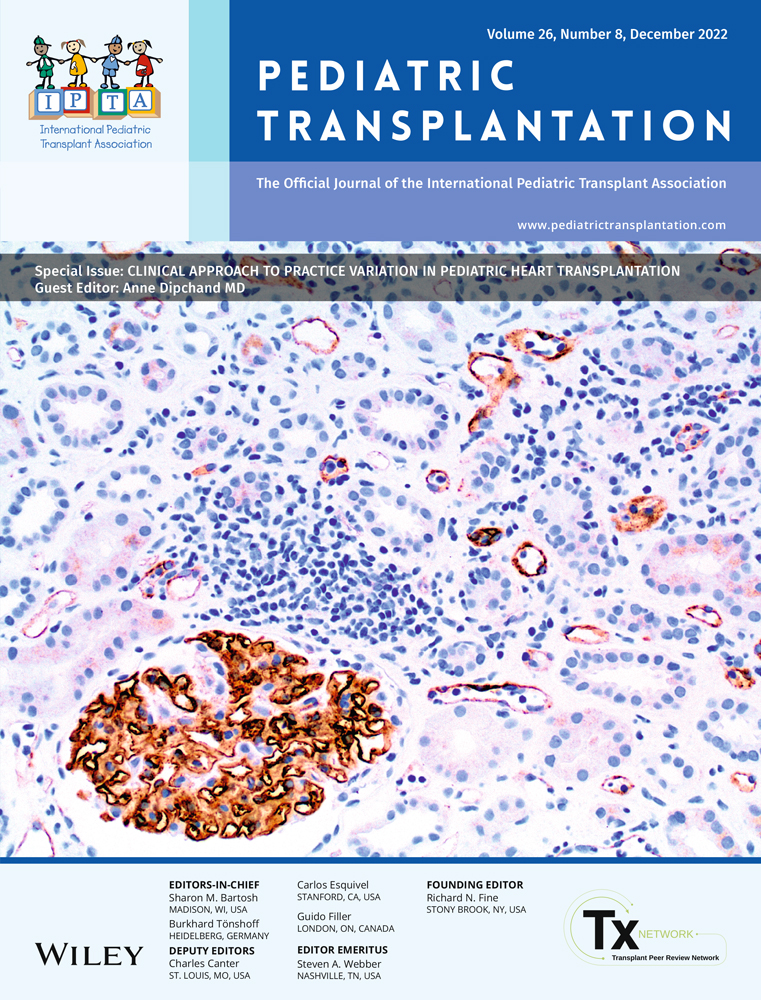Preemptive liver transplant in two patients with primary hyperoxaluria type 1: Clinical significance of nephrolithiasis and nephrocalcinosis
Abstract
Background
Although nephrolithiasis (NL) and nephrocalcinosis (NC) are very common features of primary hyperoxaluria type 1 (PH1), the long-term prognosis of NL and NC after preemptive liver transplantation (PLT) has not been elucidated.
Material and Methods
We describe the cases of two chronic kidney disease (CKD) stage three patients with different clinical courses after PLT for PH1.
Results
The first patient underwent PLT at 7 years of age with an estimated glomerular filtration rate (eGFR) of 47.8 ml/min/1.73 m2. Two years later, she experienced several episodes of obstructive pyelonephritis due to urolithiasis, and developed septic shock in one of these episodes. At the same time as these episodes, preexisting NL and NC progressively improved, with disappearance on X-ray disappeared at 8 years after transplantation. Her renal function has been maintained with an eGFR of 58.7 ml/min/1.73 m2. The second patient received PLT at 10 years of age with an eGFR of 58.9 ml/min/1.73 m2. Her renal function has been maintained with an eGFR of 65.9 ml/min/1.73 m2. She had repeated urolithiasis which started to appear at 3 years after LT. The radiological findings still show bilateral NL and NC, but the stones in the renal pelvis have shown mild improvement.
Conclusions
Regardless of the regression in NC seen on X-ray, long-term maintenance of the renal function in patients with PH1 with CKD stage 3 can be achieved with PLT. In patients with NL, there is a risk of serious complications due to posttransplant immunosuppressive therapy when obstructive pyelonephritis occurs after LT.
CONFLICT OF INTEREST
None of the authors have any conflict of interest to declare concerning the present manuscript. This work was supported in part by the grant of National Center for Child Health and Development (27-1), Japan.
Open Research
DATA AVAILABILITY STATEMENT
The data that support the findings of this study are available from the corresponding author upon reasonable request.




